Marbofloxacin Chewable Tablet 50 mg for Cats: A Comprehensive Guide
Marbofloxacin has gained widespread use in treating infections such as urinary tract infections (UTIs), skin infections, respiratory infections, and other types of bacterial conditions in cats. The chewable tablet formulation offers ease of administration, making it a go-to option for pet owners and veterinarians alike.
What is Marbofloxacin?
Marbofloxacin is a broad-spectrum antibiotic that belongs to the class of fluoroquinolones. It is primarily used in veterinary medicine to treat bacterial infections in animals, particularly in cats and dogs. Marbofloxacin works by inhibiting the enzyme DNA gyrase, which is essential for bacterial DNA replication, effectively stopping the bacteria from multiplying and leading to their death.
Indications for Marbofloxacin in Cats
Here’s a breakdown of its most common indications:
1. Skin Infections (Pyoderma)
Pyoderma, which refers to bacterial skin infections, can occur due to several reasons, including allergies, wounds, or immune system deficiencies. Marbofloxacin is effective against bacteria such as Staphylococcus and Streptococcus, which are commonly involved in skin infections. It can treat both superficial pyoderma (skin surface infections) and deep pyoderma (infection deeper in the skin).
2. Urinary Tract Infections (UTIs)
Urinary tract infections (UTIs) are another common reason for using Marbofloxacin in cats. Marbofloxacin is highly effective against the bacteria that cause UTIs, especially E. coli. It helps reduce the bacterial load in the urinary tract, alleviating symptoms such as frequent urination, blood in the urine, and discomfort.
3. Respiratory Tract Infections
Marbofloxacin is used to treat bacterial respiratory infections, such as pneumonia, bronchitis, and other lower respiratory tract infections in cats. It is particularly effective against bacteria like Mycoplasma and Bordetella, which are often involved in feline respiratory infections. Marbofloxacin’s ability to penetrate lung tissues makes it a preferred choice for treating respiratory issues caused by susceptible bacteria.
4. Soft Tissue Infections
Marbofloxacin can also be used to treat soft tissue infections, such as abscesses or cellulitis, which are common in cats that experience bite wounds or trauma. The medication helps clear the infection and promotes tissue healing. Its high tissue penetration ensures that it reaches the infected area effectively, providing faster relief and better outcomes.
5. Bone and Joint Infections
Marbofloxacin is highly effective in treating osteomyelitis (bone infections) and infectious arthritis in cats. These infections are often deep-seated, requiring antibiotics that can penetrate bone tissue. Marbofloxacin’s ability to reach bone and joint tissues makes it an ideal treatment for these conditions, ensuring bacteria are eliminated and preventing further damage to the bone and joint structures.
6. Gastrointestinal Infections
Although Marbofloxacin is not typically the first choice for gastrointestinal infections, it can still be used to treat conditions like enteritis and gastroenteritis in cats. These conditions are caused by specific bacterial infections, and Marbofloxacin can help eliminate the pathogens from the gut, promoting recovery.
7. Post-Surgical Infections
Cats that have undergone surgery are at risk of developing post-surgical infections. Marbofloxacin can be used both prophylactically (to prevent infection) and as treatment if an infection develops after the procedure. It is particularly useful in treating infections at the surgical site or in internal organs that may have been affected during the procedure.
How Marbofloxacin Works:
Marbofloxacin works by targeting bacterial DNA replication. It inhibits two key enzymes:
- DNA gyrase: Helps in the unwinding and replication of bacterial DNA.
- Topoisomerase IV: Assists in the separation of replicated DNA strands.
By inhibiting these enzymes, Marbofloxacin disrupts the replication and repair of bacterial DNA, thereby halting bacterial growth and effectively killing the bacteria.
Benefits of Marbofloxacin for Cats
- High Tissue Penetration:
It reaches high concentrations in tissues like the skin, urinary tract, and bones, ensuring effective treatment in these areas. - Fast-Acting:
Cats typically show improvement within a few days of starting the medication, with a rapid reduction in infection symptoms and inflammation. - Well-Tolerated:
Marbofloxacin is generally safe with mild, temporary side effects like vomiting or diarrhea being rare. - Effective Against Resistant Bacteria:
It is particularly useful for treating antibiotic-resistant infections, providing an alternative when other antibiotics fail. - Easy Administration:
The chewable tablet form makes it easy to administer, reducing stress for both the cat and the owner. - Suitable for Adult Cats:
Marbofloxacin is safe for most adult cats but should be avoided in kittens under 1 year due to the risk of joint damage.
Dosage Instructions for Marbofloxacin 50 mg Chewable Tablets in Cats
Proper dosage and administration are crucial to ensure the effectiveness of Marbofloxacin in treating bacterial infections in cats. This section will provide detailed guidance on how to administer Marbofloxacin, the correct dosage based on your cat’s weight, and tips to make the process easier.
General Dosage Guidelines:
| Cat’s Weight | Dosage | Tablet Amount |
| 1.0 kg (2.2 lbs) | 1 mg | 1/50th of a tablet |
| 2.0 kg (4.4 lbs) | 2 mg | 1/25th of a tablet |
| 3.0 kg (6.6 lbs) | 3 mg | 1/16th of a tablet |
| 4.0 kg (8.8 lbs) | 4 mg | 1/12th of a tablet |
| 5.0 kg (11.0 lbs) | 5 mg | 1/10th of a tablet |
| 6.0 kg (13.2 lbs) | 6 mg | 1/8th of a tablet |
| 7.0 kg (15.4 lbs) | 7 mg | 1/7th of a tablet |
| 8.0 kg (17.6 lbs) | 8 mg | 1/6th of a tablet |
| 9.0 kg (19.8 lbs) | 9 mg | 1/5th of a tablet |
| 10.0 kg (22 lbs) | 10 mg | 1/5th of a tablet |
How to Administer Marbofloxacin Chewable Tablets:
- Direct Administration:
- Chewable Tablets: Marbofloxacin comes in a chewable form that is palatable to most cats. You can offer the tablet as a treat directly to your cat. Most cats enjoy the taste and will eat it without issue.
- Tips: If your cat resists, you can break the tablet into smaller pieces, or slightly crush it to ensure the full dose is consumed. Always confirm with your vet if this is acceptable.
- Hiding in Food:
- If your cat refuses to take the tablet directly, you can hide it in a small portion of their favorite wet food or a tasty treat. Common options include:
- Peanut butter (without xylitol).
- Soft cheese.
- Canned tuna or chicken.
- Ensure the entire tablet is ingested. If using food, try to keep the portion small so that your cat eats the whole dose at once.
- If your cat refuses to take the tablet directly, you can hide it in a small portion of their favorite wet food or a tasty treat. Common options include:
- Use a Pill Pocket:
- If your cat is particularly picky, you can use a pill pocket—a soft treat designed to hide pills inside. These are available at most pet stores and are often quite effective.
- Crushing the Tablet:
- Crushing the tablet may alter the drug’s effectiveness or taste, but if your cat absolutely refuses to swallow it, you may crush the tablet and mix it with a small amount of food. However, always check with your vet before doing this, as it could affect the absorption rate.
Precautions and Potential Side Effects of Marbofloxacin 50 mg Tablets for Felines
Side Effects:
- Gastrointestinal Upset:
- Management: Administering the tablet with food can help reduce stomach irritation.
- Allergic Reactions (Rare):
- Symptoms may include swelling of the face, difficulty breathing, or skin rashes. If these signs occur, seek immediate veterinary care.
- Precaution: If your cat has a known allergy to fluoroquinolones, avoid using Marbofloxacin.
- Tendon Damage:
- Tendonitis and tendon rupture, although rare, are potential risks, especially in older cats or those with joint issues.
- What to Watch For: Limping, difficulty walking, or sudden lameness may indicate tendon damage. Discontinue the drug and consult your vet immediately.
- Neurological Symptoms:
- These side effects are rare but should be addressed promptly.
- Precaution: If you notice unusual nervous system activity, contact your vet right away.
- Photosensitivity:
- Marbofloxacin can increase sensitivity to sunlight, making your cat more prone to sunburn or skin irritation.
- Precaution: Keep your cat indoors or limit outdoor exposure to sunlight during treatment.
Precautions:
- Avoid in Kittens Under 1 Year:
- Marbofloxacin should not be used in young kittens (especially large breeds) due to the risk of cartilage damage during growth.
- Renal (Kidney) and Hepatic (Liver) Conditions:
- Cats with kidney or liver issues may require dosage adjustments. Marbofloxacin is metabolized by the liver and excreted by the kidneys, so regular monitoring is advised.
- Pregnancy and Lactation:
- Use with caution in pregnant or lactating cats, as its safety in these stages has not been fully established. Consult your vet if your cat is pregnant or nursing.
- Drug Interactions:
- Marbofloxacin can interact with other medications, including antacids or other antibiotics.
- Dehydration:
- Make sure your cat stays hydrated during treatment, especially if they experience gastrointestinal upset. Dehydration can exacerbate kidney problems.
Contraindications and Interactions
1. Drug Interactions
- Marbofloxacin may interact with other drugs, including antacids and other antibiotics. Always inform your vet about any other medications your cat is taking.
2. Avoid in Kittens Under 1 Year
- Due to potential cartilage toxicity, Marbofloxacin should not be used in kittens or growing cats, particularly large breed cats, unless absolutely necessary.
Evaluation of Marbofloxacin’s Effectiveness in Cats
Marbofloxacin has been extensively studied for its efficacy and safety in treating bacterial infections in cats. Here are the key findings:
- High Tissue Penetration:
It reaches deep tissues like bones, joints, and lungs, making it particularly effective for infections in the urinary tract and respiratory system. - Once-Daily Dosing:
The once-daily dosing regimen improves owner compliance and ensures sustained drug levels in the bloodstream due to its long half-life. - Safety and Tolerability:
Marbofloxacin is generally well-tolerated, with rare gastrointestinal disturbances (vomiting or diarrhea). Serious side effects like tendonitis are rare but possible, especially in older cats. - Limited Resistance Development:
It is effective against antibiotic-resistant bacteria, with slower development of resistance compared to other antibiotics. - Precautions:
- Avoid in kittens under 1 year due to potential joint damage.
- Liver or kidney dysfunction may require dosage adjustments.
- Clinical Efficacy:
Marbofloxacin typically provides rapid improvement within 48-72 hours, with full recovery after completing the treatment course.
Conclusion
Marbofloxacin 50 mg Chewable Tablets for Cats are a powerful and effective treatment option for a wide range of bacterial infections. Whether your cat is suffering from skin infections, urinary tract infections, respiratory issues, or soft tissue infections, Marbofloxacin offers broad-spectrum activity that targets both Gram-positive and Gram-negative bacteria, ensuring a high success rate in treating these conditions. The convenience of once-daily dosing, combined with minimal side effects and rapid action, makes Marbofloxacin a preferred choice for many veterinarians. However, as with any medication, it’s crucial to follow your veterinarian’s dosage instructions and ensure that the full course of treatment is completed to avoid complications such as bacterial resistance.







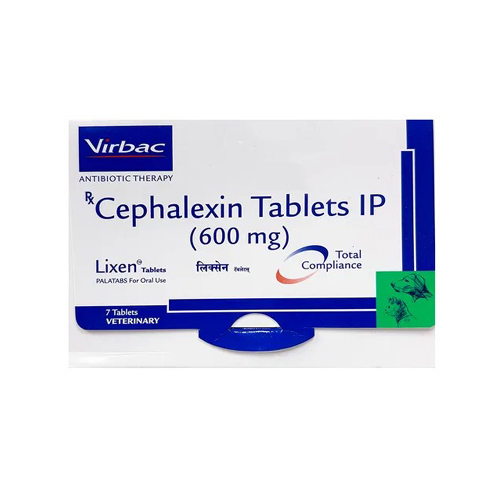
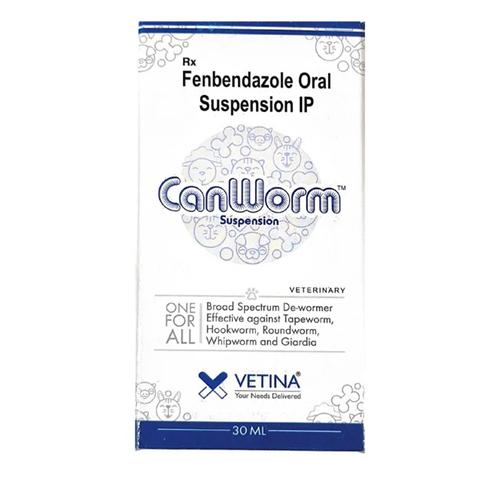



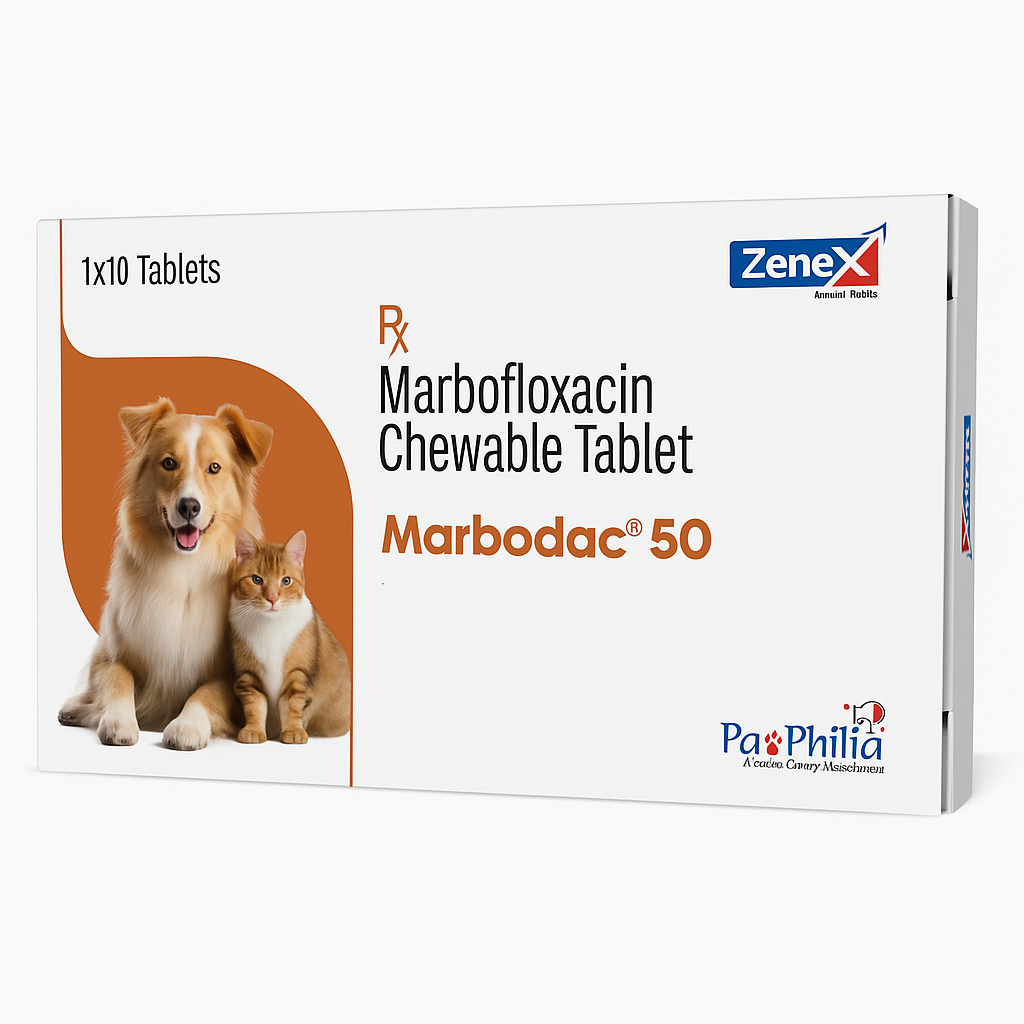

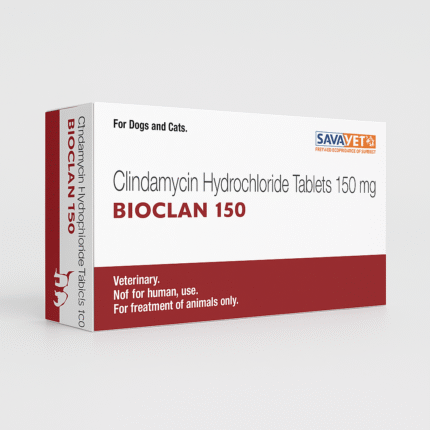
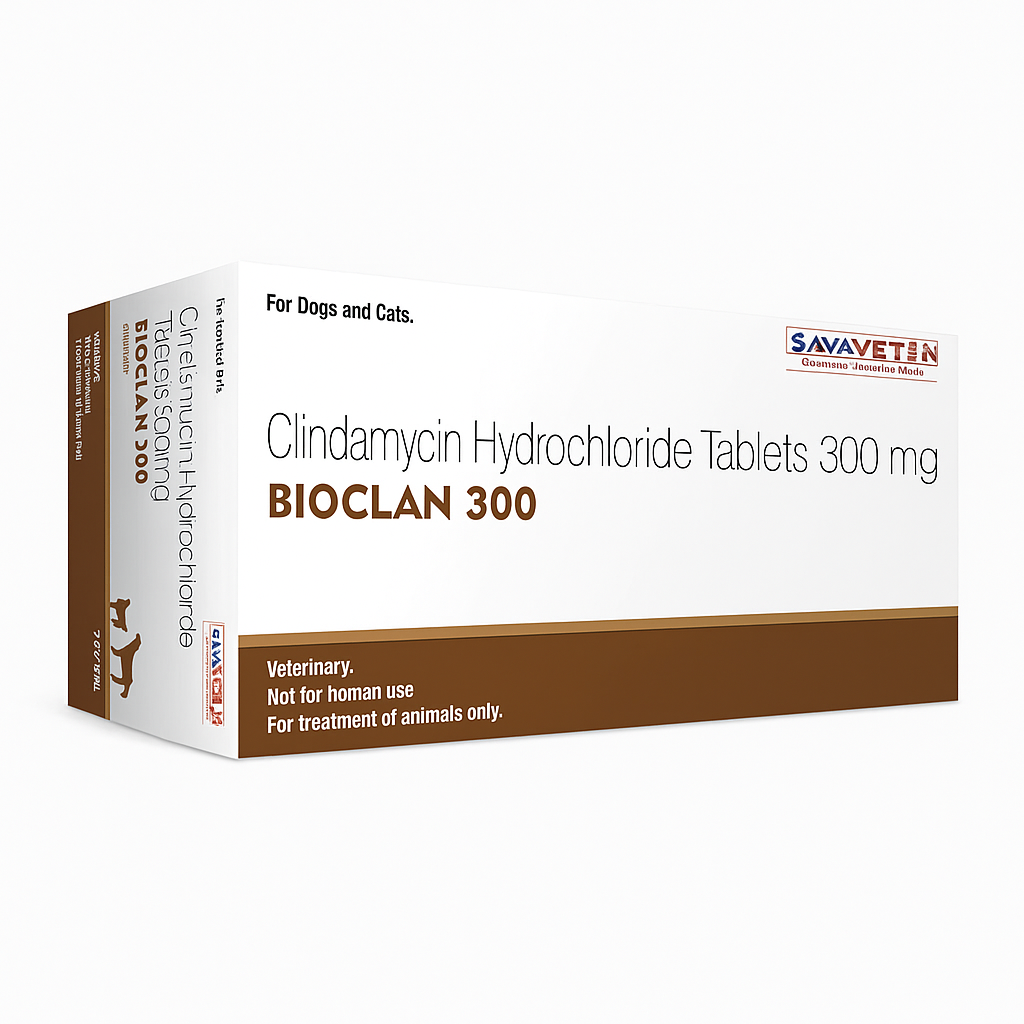
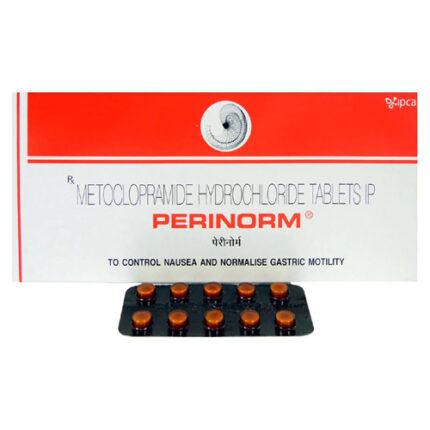

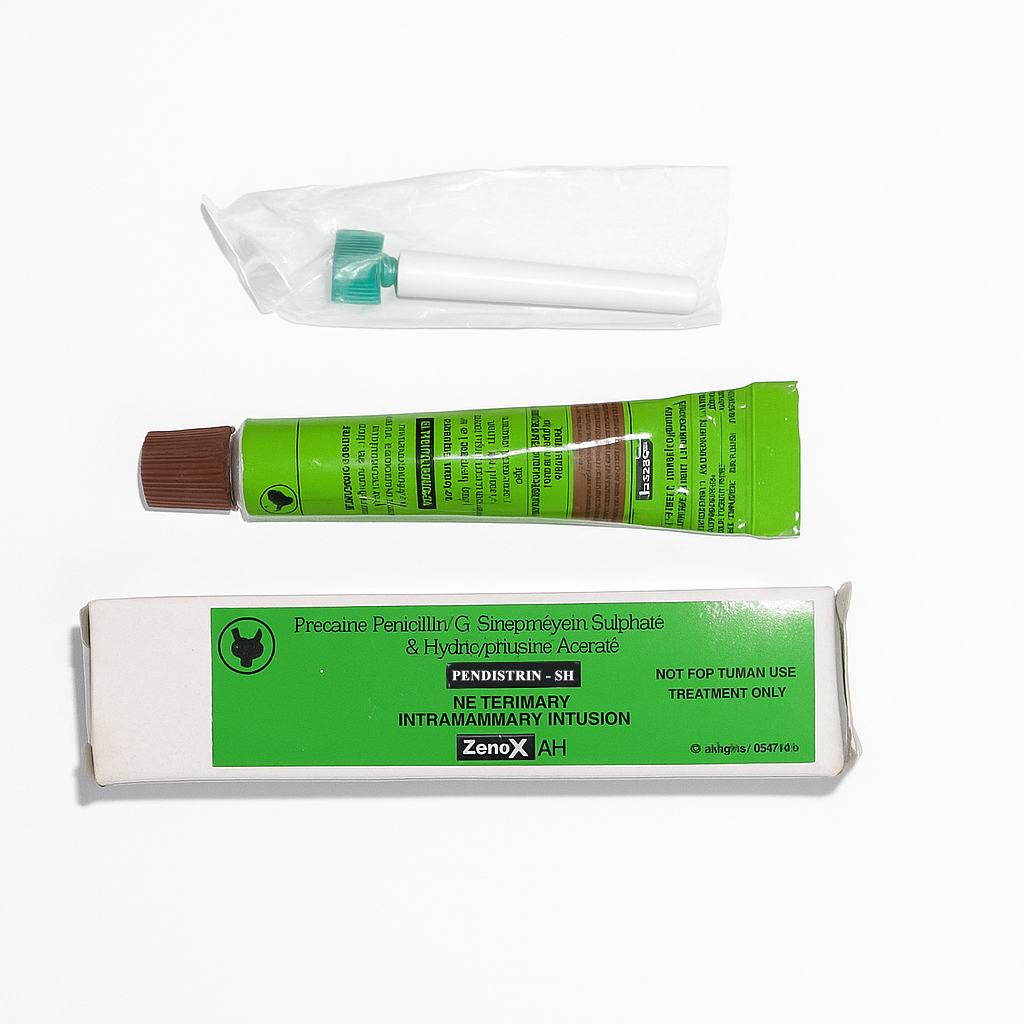
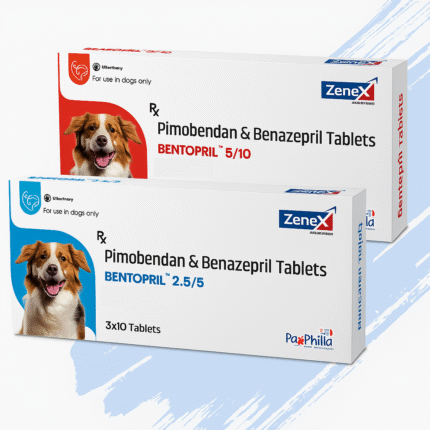
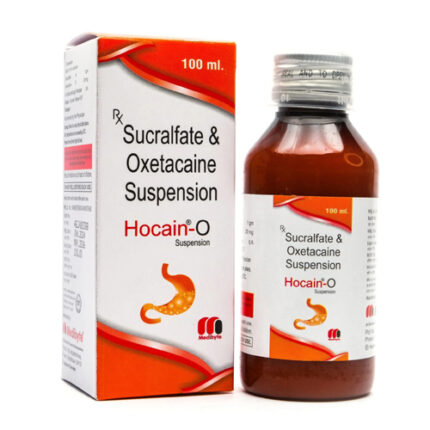
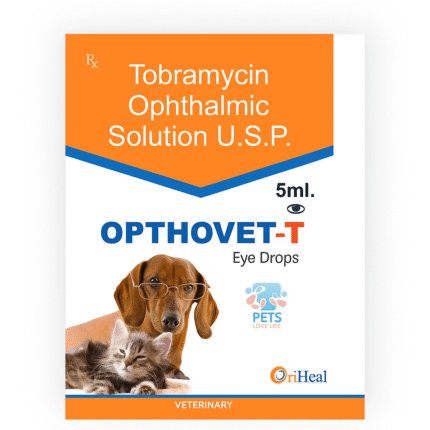
Reviews
There are no reviews yet.